
 Victor Nuño
The Hockey Writers
Victor Nuño
The Hockey Writers
35
Reads
0
Comments
Dallas Stars 2020 Playoffs Preview
It has been so long since hockey was played that it’s worth remembering the Dallas Stars’ 2019-20 season. It was a bit of a rollercoaster that saw a coaching change, a stingy defense paired with a lack of scoring, and ended with a six-game losing streak (0-4-2) when the pandemic prematurely ended the regular season. The Stars finished third in the competitive Central Division, but thanks to a playoff format based on points percentage, they are the 4th seed in the west and avoided the play-in series.
They will play the other top teams in the west in a round-robin, with the potential of moving up the seeding. If this was a traditional year, the Stars would face the 2nd seed Colorado Avalanche and have to “win” the Central before moving on to the Western Conference Final. Winning the Cup is never easy, but this is a favorable scenario for the Stars.
It is fantastic to see videos from practice again:
Stars Coaching
The Stars fired Jim Montgomery on Dec. 10 and replaced him with interim coach Rick Bowness. Montgomery and the Stars had a record of 17-11-3 when he was let go. This was an off-ice decision and not related directly to his performance. Under Montgomery, the Stars were 27th in goals for per 60 minutes (GF/60), but 3rd in goals against per 60 (GA/60). Under Bowness, those rates fell to 30th in GF/60 and 5th in GA/60.
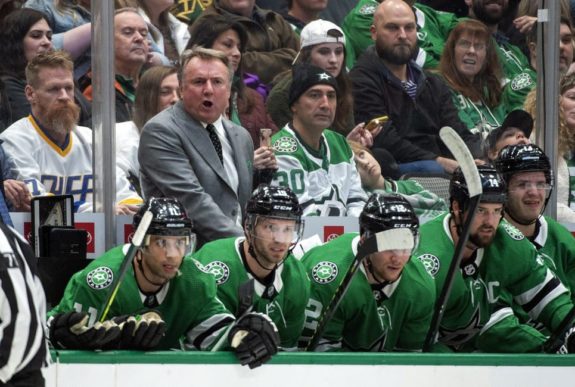
Bowness didn’t have a whole lot of time to make any changes before the shutdown, but he has now had months to figure out a new strategy. According to Matthew DeFranks of the Dallas News, Bowness was preaching “speed and support through the neutral zone” at training camp this week as well as “defensemen helping to break the puck out and joining the rush.” (from ‘Stars’ interim coach Rick Bowness alters offensive strategy in first day of training camp,’ Dallas Morning News, 07/13/2020) The Stars certainly have some fast and excellent puck-moving defensemen so this seems to play to their strengths. Will it improve offense which is one of the league’s worst?
Lack of Scoring
The Stars struggled to score this season. Tyler Seguin was their leading scorer, but he didn’t hit a 60-point pace (he was at 59). The next closest was captain Jamie Benn with a disappointing 47-point pace. Here’s a look at the top 6 scorers:
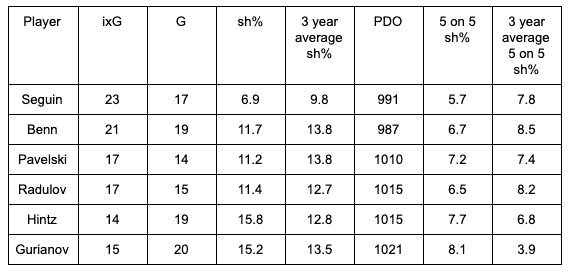
Seguin, Benn, Pavelski, and Radulov all suffered from a shooting percentage that was lower than their three-year average. Those three also failed to hit their expected goals metric and leading scorer Seguin was the furthest from doing so. Only Seguin and Benn suffered from an unlucky PDO. Radulov probably suffered the most from a lack of conversion by his teammates as measured by the difference in his 5-on-5 shooting percentage compared to his three-year average.
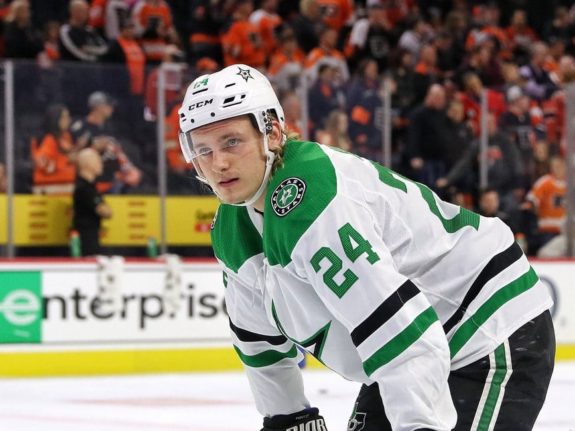
Roope Hintz and Denis Gurianov are a breath of fresh air on this table. They both outpaced their expected goals riding career-high shooting percentages and a bit of luck. In an ideal scenario, Seguin, Benn, and Pavelski have their unlucky percentages regress to the mean and increase their scoring, while Hintz and Gurianov continue to ride their luck, and Radulov gets more help from his teammates. This is a fairly likely scenario that would improve the Stars’ chances of bringing home the Cup this postseason.
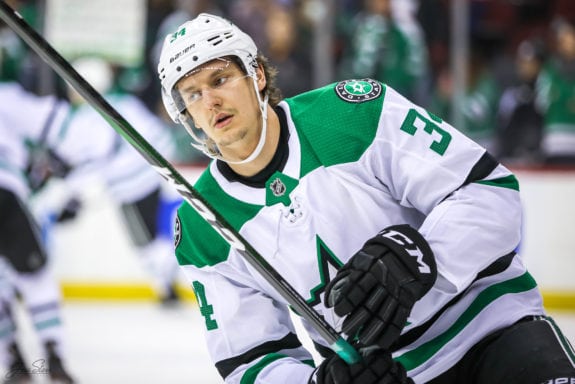
It would really help if Hintz and Gurianov could get more ice time since, despite being the only two to outperform their expected goal numbers, they were 8th and 11th in ice time amongst forwards. A lot of those minutes went to Faksa, Comeau, and Cogliano (FCC) who are an important shut-down line, but the Stars need to score to win games. The expected goal rates for the forwards this season, which is a metric of expected goals against per 60 (xGA/60) versus expected goals for per 60 (xGF/60) sheds even more light:
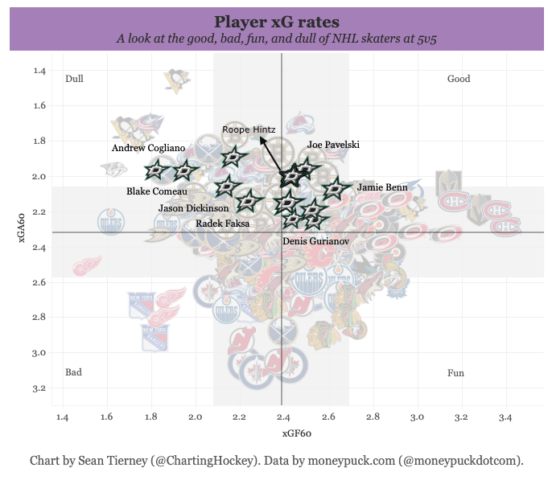
Hintz and Gurianov are really good. Not only are they good at scoring, but also not getting scored on. It begs the question, why play the FCC line so much whey they are buried on the left side of this graph, meaning they are likely to not get scored on, but also not likely to score? If the Stars want to have more success, then they need to play Hintz and Gurianov more.
Round Robin
The Stars will play one game each against the other top four seeds, the St. Louis Blues, Avalanche, and Vegas Golden Knights. They could lose all three games and it wouldn’t change their seeding. If, however, they do better than the other teams, they could move up. There isn’t much to play for, other than getting back into game shape and working on new systems. They will want to try different line combinations and attempt to improve their offense. The most important thing in these games is not to get injured.
First Round Matchup
Assuming they remain the 4th seed in the West, the Stars will play the highest remaining teams between the Edmonton Oilers, Nashville Predators, Vancouver Canucks, Calgary Flames, and Winnipeg Jets. They won’t play the Chicago Blackhawks, Arizona Coyotes, or Minnesota Wild because if any of those teams win their play-in series, they will play one of the top three teams (again, assuming the Stars don’t improve their seed). It is hard to predict who they will face with so many variables, but looking at the team xG rates illuminates some favorable matchups:
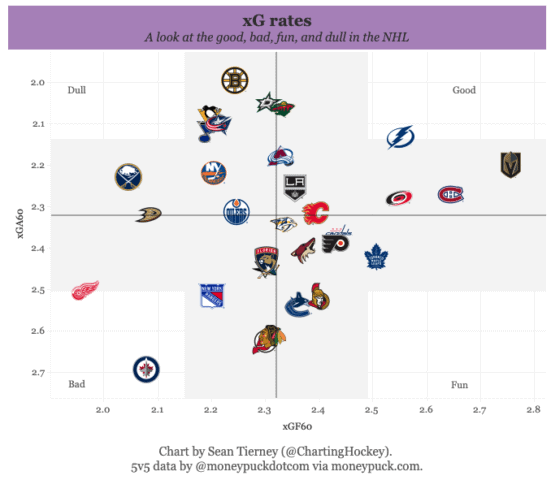
While the Stars aren’t in the “good” range, they are extremely good at limiting chances against. Edmonton and Nashville aren’t any better than the Stars in xGF/60, but far worse at xGA/60. Vancouver might be one of the toughest matchups as they have a better xGF/60, though they suffer in the xGA/60 metric greatly.
Related: North Stars with 100-Point Seasons
I think the best matchup for Dallas is Winnipeg. They are the worst on this chart and a surprising playoff team based solely on the performance of Connor Hellebuyck who deserves both the Vezina and Hart Trophy consideration. In the end, the biggest challenge for the Stars will be the top three seeds and they should win their first-round matchup.
X Factors
There are several X factors here including the goalies, but three to focus on are high-end prospects Ty Dellandrea, Jason Robertson, and Thomas Harley. None have significant NHL experience and are expected to play depth roles, possibly without getting into any games. However, they might get the opportunity to contribute and, if they do, they could become a story if there is a deep playoff run.
Especially for Dellandrea and Robertson considering the Stars’ scoring woes, and for Harley considering Roman Polak opted out of the return to play action. The full training camp roster is here.
Ty Dellandrea
The 2018 13th overall pick Dellandrea has just completed his fourth season in the OHL for the Flint Firebirds, while briefly playing for the Texas Stars of the AHL in 2018-19. Flint has not been a good team for most of Dellandrea’s tenure, though they were much better in 2019-20 thanks in large part to him.

Known as more of a creative set-up man, he is also responsible in his own zone. The fact that he is a two-way center and doesn’t need to be in the top-6 to be effective may mean Dellandrea gets a long look for playing time this postseason. If his 70 points in his final 47 OHL games are any indication of his offense, he could chip in as a nice depth piece.
Jason Robertson
Robertson, a 2017 2nd-round pick (39th overall), translated his OHL league-leading 117 points in 62 games in 2018-19 extremely well to the AHL. He started a bit slow in his first professional season but finished with 39 points in his final 42 games for the Texas Stars. The biggest knock on him has always been his skating, but his offensive creativity and ability are undeniable. He might pair nicely with speedster Roope Hintz.
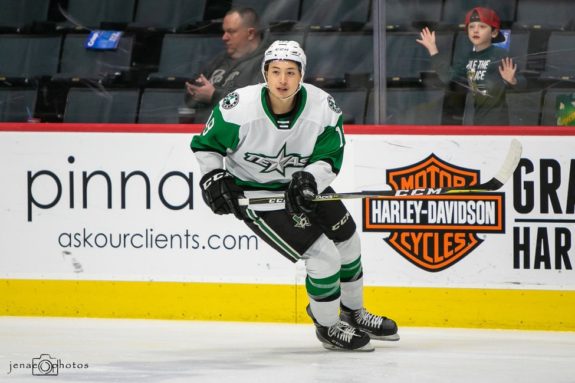
Robertson has the high-end offensive skill that not many Stars in the top 6 possess which could help him get some NHL minutes. In contrast to Dellandrea, Robertson needs to be in a top 6 role in order to be effective, so I doubt we will see him in the lineup in a depth role. He could help improve a 13th ranked Stars power play if given the opportunity.
Thomas Harley
Like Dellandrea, Harley was a first-round pick in 2018 (8th overall). The smooth-skating defenseman has continued to excel for the Mississauga Steelheads since his draft, projecting as a future top-4, left-handed shot behind Miro Heiskanen. More of an all-around rearguard, Harley put up 57 points in 59 games in 2019-20 proving he also has offensive pop to his game.
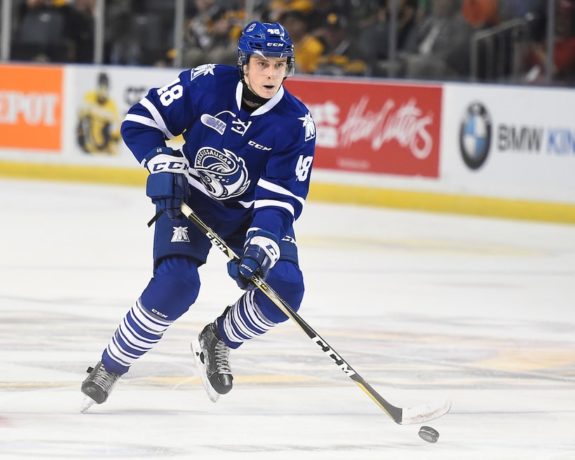
It’s probably a long-shot that Harley will see NHL minutes during the playoffs as Heiskanen, Lindell, Oleksiak, and Sekera are all ahead of him on the depth chart on the left side. While he projects to be better than all but Heiskanen, that may not be for another season or two. However, if there is an injury to one of the aforementioned lefties, we will get a chance to see what Harley can do sooner than later.
Goaltending
The Stars have arguably the best tandem in the league, certainly in the conversation with the Bruins. Ben Bishop and Anton Khudobin combined to push the Stars to second in both goals-against average and save percentage behind the Bruins. If the Stars don’t improve their scoring and want to have any chance during this playoff run, the goalies are going to have to continue to be spectacular. Digging deeper on the goalie numbers we see that it was not just a good defensive system the Stars employ, their goalies are really good.
| Player | Games Played | dFSV% | GSAA | GSAx |
| Khudobin | 30 | .52 | 18.3 | 6.2 |
| Bishop | 44 | .32 | 13.6 | 5.7 |
The delta fenwick save percentage (dFSV%) metric controls for how good the team is in front of the goalie. If this number is negative, the goalie is bad despite the team. If this number is positive, they were very good, regardless of the team. Fenwick measure unblocked shot attempts toward the net. Khudobin’s .52 is elite as it ranks him 5th in the league amongst goalies with at least 800 minutes played this season (from Evolving Hockey).
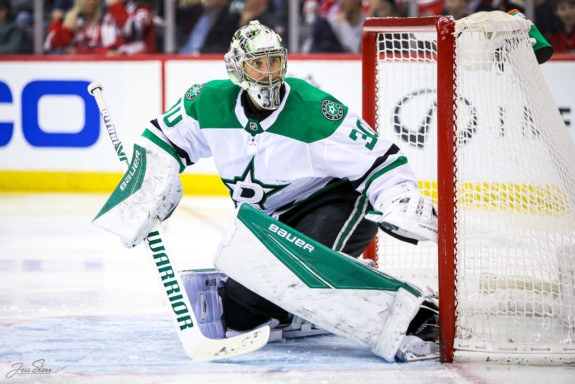
The goals saved above average (GSAA) is very positive both indicating both Khudobin and Bishop saved 18 and 14 goals more than the average goalie would given their workload and situation. Their goals saved above expected (GSAx) is relatively even between the two and further shows they outperformed the number of goals they should have let in based on the team in front of them.
Related: Brothers in the NHL
Both goalies are expected to get starts in the round robin, but I expect it will be Bishop once the first round starts based on track record. The Stars would likely not miss a beat if they either had to or wanted to turn to Khudobin.
Prediction Time
I doubt the rest of the NHL wants to play the Dallas Stars. Their stingy defense will give other teams fits, but they will only go as far as their offense will carry them. The deep playoff run in 2019 no doubt was a valuable learning experience for the Stars. The big question is can they replicate that success? I’m not sure they can get past St. Louis or Colorado, so my prediction is they fall just short of the Stanley Cup Final, but I also wouldn’t be surprised if they do get past them. It would certainly make the Stars nation very happy.
The post Dallas Stars 2020 Playoffs Preview appeared first on The Hockey Writers.
Popular Articles

















































 Blackhawks Chicago
Blackhawks Chicago Panthers Florida
Panthers Florida Penguins Pittsburgh
Penguins Pittsburgh Rangers New York
Rangers New York Avalanche Colorado
Avalanche Colorado Kings Los Angeles
Kings Los Angeles Maple Leafs Toronto
Maple Leafs Toronto Bruins Boston
Bruins Boston Capitals Washington
Capitals Washington Flames Calgary
Flames Calgary Oilers Edmonton
Oilers Edmonton Golden Knights Vegas
Golden Knights Vegas Senators Ottawa
Senators Ottawa Lightning Tampa Bay
Lightning Tampa Bay Flyers Philadelphia
Flyers Philadelphia Islanders New York
Islanders New York Sabres Buffalo
Sabres Buffalo Red Wings Detroit
Red Wings Detroit Devils New Jersey
Devils New Jersey Hurricanes Carolina
Hurricanes Carolina Blue Jackets Columbus
Blue Jackets Columbus Predators Nashville
Predators Nashville Wild Minnesota
Wild Minnesota Blues St. Louis
Blues St. Louis Stars Dallas
Stars Dallas Jets Winnipeg
Jets Winnipeg Mammoth Utah
Mammoth Utah Sharks San Jose
Sharks San Jose Canucks Vancouver
Canucks Vancouver Ducks Anaheim
Ducks Anaheim






